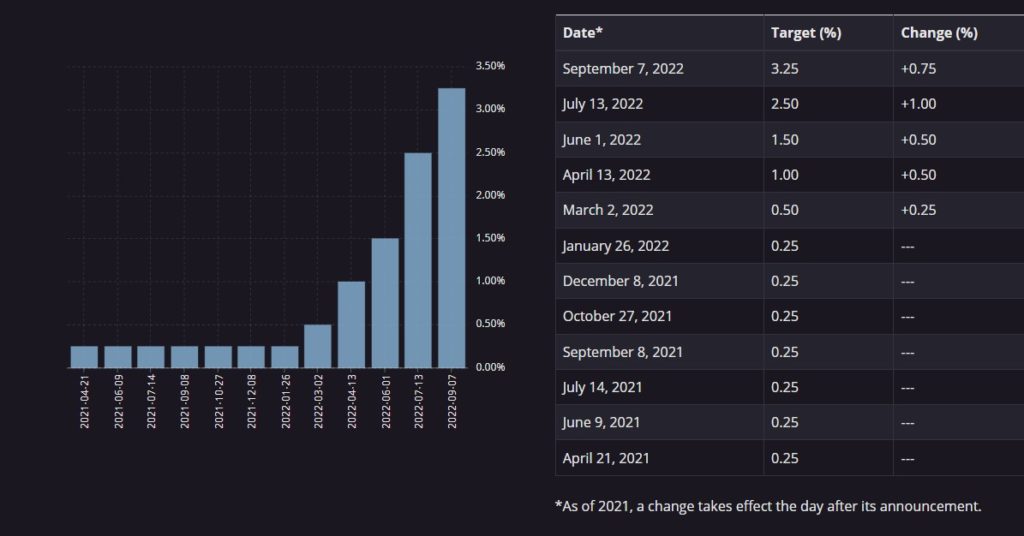
Source: MGM
By Michael O’Neill
It’s been a tough year for many traders, and there are less then three months to right the ship.
“Diamonds are Forever,” but not positive risk sentiment
Markets are grappling with a host of escalating geopolitical issues but the most pressing come “From Russia with Love,” although instead of love, it is the fear nuclear weapons will be used in the Ukraine war. President Putin hinted as much in a recent speech.
Expectations that Iran and the US will agree to a new nuclear deal have faded but there is still hope as “Tomorrow Never Dies.” Iran is experiencing a wave of social unrest and a nuclear agreement with the US would end sanctions and free up billions of frozen assets. It would also allow Iranian crude back on the market.
Opec is looking at their oil profits with a “Golden Eye.” They believe they are entitled to prices above $100/barrel which occurred in the wake of Russia’s invasion of Ukraine. The cartel does not think that current prices reflect fundamentals.
The September Monthly Oil Report said, “The paper and physical markets have become increasingly more disconnected. In a way, the market is in a state of schizophrenia, and this is creating a type of yo-yo market and sending erroneous signals at times when greater visibility and clarity and well-functioning markets are needed more than ever to allow market participants to efficiently hedge and manage the huge risks and uncertainties they face.”
To that end, Opec announced a 2.0 million barrel/day reduction in crude production beginning November 1.
North Korea’s Kim Jong-un is playing with his missile collection and just fired one across Northern Japan, sending resident scurrying for shelter. If the missile were of the usual North Korean quality, Japanese politicians would be looking at the North Korean leader with a “View to a Kill.”
China is another wild card. President Xi Jinping is expected to maneuver himself into an unprecedented third term. His first 10 years has seen China increase human rights violations, trigger a trade war with the United States, step up intimidation of Taiwan, and lay claim to most of the South China Sea. China’s ambitions are such that “The World is Not Enough.”
The geopolitical tensions are just one factor raising market volatility causing many traders to believe trading is less analytical and more akin to rolling the dice at “Casino Royale.” The biggest driver of financial market volatility in 2022 are central bank actions and communications.
It started with the Fed and Chair Powell’s denying increasing inflation was a problem and insisting it was merely “transitory.” Global central bankers embraced his message and by the time policymakers admitted their error, they were far behind the inflation-fighting curve.
Not anymore.
The Fed increase the Fed funds rate 5 times since March, lifting rates from near zero to 3.25% with another 75-bps pencilled in at the November 2 meeting. The Bank of Canada followed a similar path to raise the overnight rate to 3.25% by September 7, and likely 4.0% by October 26.
Graph: BoC rates hikes in 2022

Source: Bank of Canada
The Fed’s aggressive inflation fighting posture drove equity indexes lower from March until July before a two-month rally. The gains were due to analyst speculation of a “Fed Pivot” that, because of the rising risk of a US recession, soon became gospel.
The S&P 500 index rallied from 3674.84 at the June 16 close to 4297.14 on August 16. Prices drifted lower ahead of Jerome Powell’s August 26, Jackson Hole speech then dived when Mr Powell emphasised the Fed’s focus is to lower inflation to the 2.0% target. “Dr No” kiboshed the pivot and stock traders bailed. The S&P plunged to new 2022 lows with relieved market bears saying we will “Die Another Day.”
Mr Powell was on the bus, but it was bond traders in the driver’s seat. They began rejecting the notion of a “Fed-Pivot” at the beginning of August, driving the US 10-year Treasury yield from 2.58% to 4.01% by late September.
“Octopussy” starts the final quarter of the year. Hopes of waning inflation pressures were put on the back-burner after Opec announced it would cut production beginning November 1. West Texas oil prices rallied to $88.40/b after the news.
If a spike in the 10-year yield is sustained above 4.0%, T-Bond will have the lead in MarketFall.





